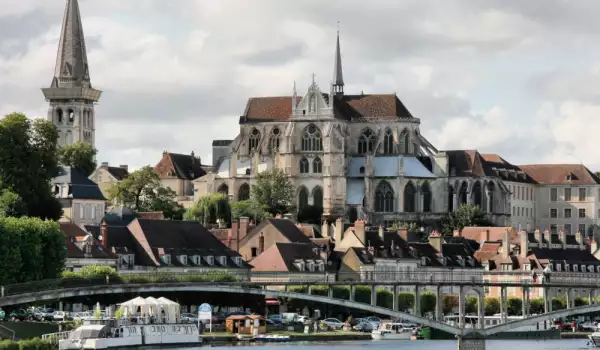Auxerre

The French city of Auxerre with a population of 45 000 people is the capital of the department of Yonne. This is an ancient city in which were found an ancient crypt with frescoes from the ninth century, and sarcophagi from the sixth century. Auxerre is best known for the fact that there was educated an Irish youth named Patrick, who was eventually canonized as St. Patrick, patron saint of Ireland.
Auxerre has subsequently become one of the French wine centers, but in the nineteenth century disease in vineyard plantations destroyed all but one vineyard.
The first settlement, which was at the site of today’s town Auxerre, was founded by the Gauls. After the Roman conquest of Gaul, they extended the boundaries of the village and called it Autessiodurum. This was a great Roman city that had an amphitheater, several churches and large buildings, but until today has remained nothing of the ancient heritage of Auxerre.
In 258 the Roman pope sent Pélerin, whose purpose was to convert the natives, and he succeeded. Not long after, the first church was erected in the city and a diocese was based here. The first bishop of the city is Saint Amateur. In the fourth century began the construction of fortifications to repel enemy attacks. However, they did not defend the city from destruction by the Huns in the mid-fifth century.

This period of history in the city is connected with the name of St Germanus, whose fame grew after his death. On his grave was erected a basilica, then one of the largest French abbeys.
In the eleventh century the town was completely destroyed by fire and then re-erected. Auxerre suffered seriously during the Hundred Years War. At the same time the city's population decreased dramatically because of an outbreak of plague. At the end of the fourteenth century, French King Charles V received the city for 30, 000 gold francs.
After joining France, the city grew and increased its economic power. In the nineteenth century it was conquered by Prussian troops, and then was captured by German troops in 1940. It was liberated by Allied forces in 1944, then became a tourist center.
The Abbey of St. germanium is among the most spectacular buildings in the city. It has a museum of art and history. Tourists can see remains of a crypt since the Carolings, but are not allowed to photograph the frescoes. The museum has many interesting exhibits, among them you can see prehistoric stone tools, works of painters and sculptors from different eras, as well as works of contemporary artists. When it was built, the abbey attracted pilgrims from all parts of Christian Europe.
The treasury of the Cathedral of Auxerre, named after St Etienne is filled with wonderful works of art, including portable altars. Among the exhibits are music books that are written by hand, and also printed. Among the frescoes inside the cathedral is an image of Jesus Christ with angels, all on white horses. Such a story is completely unknown in the western religious art, and general trends in art from the thirteenth century, when the mural was painted. In the treasury of the cathedral are over four hundred works of art. The stained glass of the cathedral is a work of art.
The clock tower of the city founded in the seventeenth century is interesting that the arrow that is decorated with sun, shows the time and the arrow, decorated with a moon disk shows the day as a full lap on the face takes twenty-nine and a half days.






